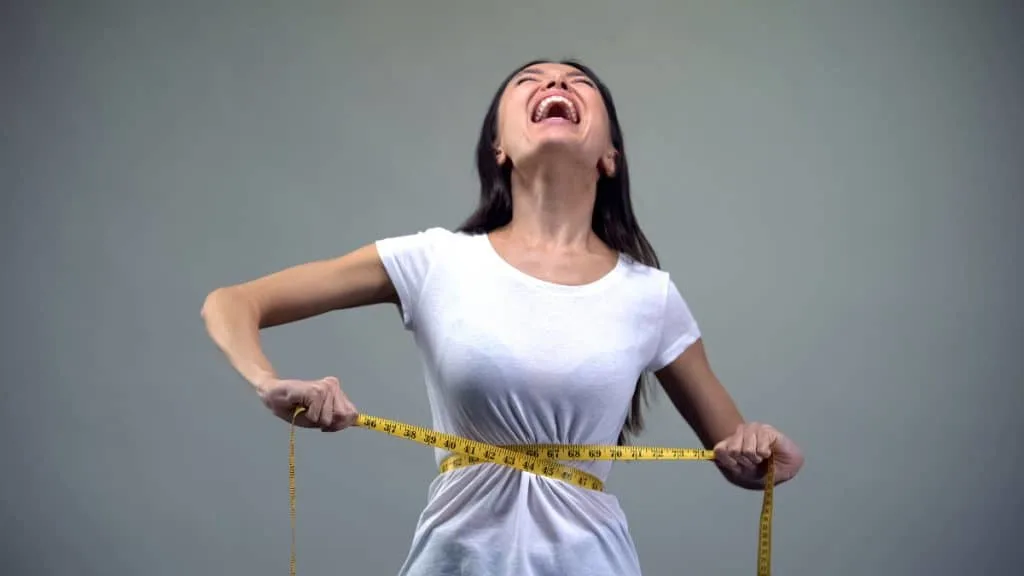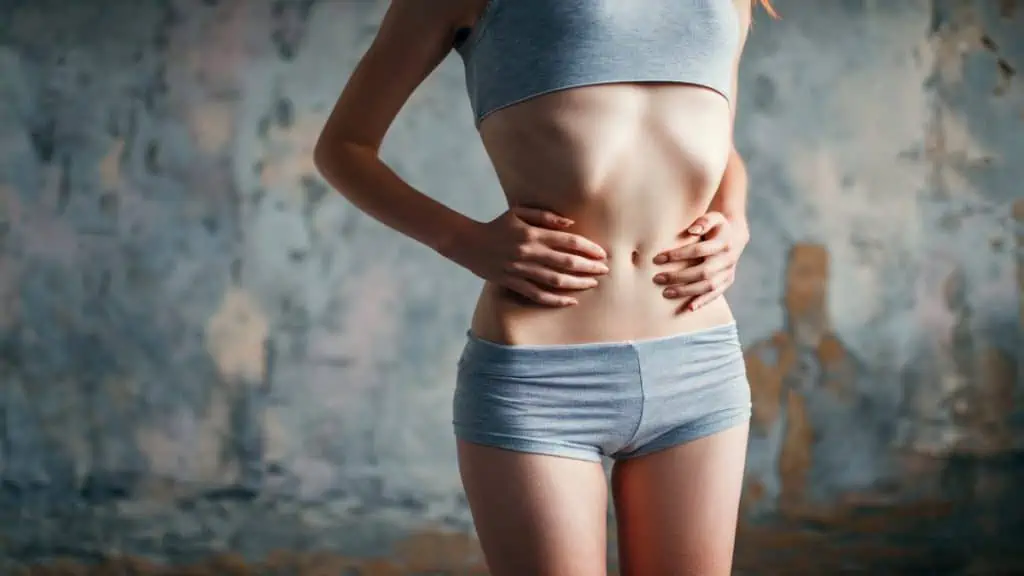Even if you know how to measure your waist size to make it as small as possible (stomach sucked in etc.), you’re still highly unlikely to have a 21 inch waist.
But that’s not to say that sculpting a 21 in waist is impossible. Indeed, for women with a really petite build and a low body fat level, getting a natural 21″ might be realistic.
Related Waist Guides:
Who has a 21 inch waist?
Most people don’t have a 21 inch waist. However, there are some ladies who managed to sculpt a 21 inch waistline.
According to the Metro, Sammy Wilson wore a corset for 18 hours a day so that she could get a 21 inch waist. [1] What’s even more impressive, in my view, is that Sammy lost nearly half her body weight, but not by wearing a corset.
Despite receiving criticism for her waist-slimming endeavor, Sammy says that she feels healthier than ever and is very pleased with her decision to change her body and sculpt a truly hourglass figure.
Can anyone get a natural 21 inch waist?
While everyone is capable of slimming their body and sculpting a narrower waist, not everyone has the genetics to get a natural 21 inch waistline.
For example, if you have muscular abdominals, then your waist might actually be a bit thicker than it looks because when you train your abs, they actually grow and get bigger.
Additionally, women with larger builds may have too large of a bone structure to get a 21 inch stomach. The good thing is, however, that when you’re tall, your waist often looks small because it’s more stretched out.
On the other hand, if a petite woman lowered her body fat and got quite lean, then it’s plausible that she could get a 21 in waist while retaining her health.
Are there any negatives of having a 21 in waist?

If you have a natural 21 inch waist due to having a small build, then it’s unlikely that you’re putting your health at risk.
Of course, if you’re restricting your calories in a bid to maintain a tiny waist, then you might be deficient in important vitamins and minerals, which could make you feel weak and dizzy. [2]
Wearing a tightly laced corset won’t help you lose weight in and of itself and, if anything, will likely weaken your abdominal muscles. Research even shows that many people don’t like wearing corsets and that lowering your calories is more effective for dropping body fat if you’re overweight. [3]
Wearing waist trainers for extended periods of time can also negatively affect your digestion and breathing, so there are definitely much safer ways to go about trimming your waist.
Conclusion: Should you aim for a 21″ waist?

21 inches is an arbitrary measurement. You can have a waist that looks small and lean without it being anywhere near 21 inches. Indeed, the vast majority of models that you see and perhaps aspire to look like do not have a 21 inch waist.
As noted, the only women who can realistically get a 21″ waist while keeping their health in order are those with naturally small builds and who have a low body fat level.
When you consider the fact that a 21 in waist is normal for a 4 or 5-year-old child, you begin to realize just how skinny a 21 inch waist really is. In fact, if your legs measure 21 inches, then that’s definitely on the slim side as well.
References
- Lindsay, J. (2020, September 22). Woman who wears corset for 15 hours a day vies for smallest waist world record. Metro. https://metro.co.uk/2020/09/22/woman-who-used-to-be-size-20-wears-corset-for-18-hours-a-day-and-now-has-21-inch-waist-13307093/
- Mayo Clinic. (2022a, January 18). Vitamin deficiency anemia – Symptoms and causes. https://www.mayoclinic.org/diseases-conditions/vitamin-deficiency-anemia/symptoms-causes/syc-20355025
- Wikstrand, I., Torgerson, J., & Boström, K. B. (2010). Very low calorie diet (VLCD) followed by a randomized trial of corset treatment for obesity in primary care. Scandinavian Journal of Primary Health Care, 28(2), 89–94. https://doi.org/10.3109/02813431003778540

